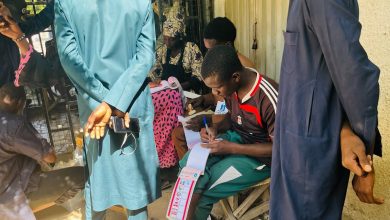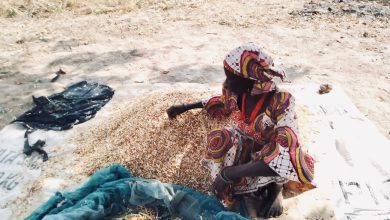Nigerian Air Force Admits Responsibility For Nasarawa Airstrike That Killed Dozens
The Nigerian Air Force says it was acting on intelligence provided by other agencies when it launched an airstrike in which 39 were killed. Human Rights Watch say the dead were cattle herders with no connection to terrorism. Previously “unidentified drones” had been blamed.

The Nigerian Air Force has confirmed for the first time it carried out an airstrike six months ago in Nasarawa state, in which at least 39 people were killed.
In a letter received by US-based Rights group Human Rights Watch, a senior commander acknowledged the airstrike on January 24 and said it was part of an “intelligence-driven” operation against “suspected terrorists”.
But researchers from HRW say they have established the victims of the airstrike were cattle herders with no connection to terrorism.
Previously the governor of Nasarawa state had claimed the NAF was not responsible for the attack, which he said had been carried out by an “unidentified drone”.
HRW released the letter, marked “Restricted”, to the public and renewed their call for an independent inquiry.
The airstrike happened in Kwatiri, in Doma local government area, Nasarawa state.
‘Unacceptable delay’
“The military’s unacceptable delay in owning up to the killing and injuring dozens of civilians only compounds the tragedy of this shocking attack,” said Aniete Ewang, Africa researcher at HRW.
“The Nigerian military should provide full accountability for their actions as well as financial compensation and livelihood assistance commensurate with the needs of the victims and their families.”
HRW wrote to the Nigerian chief of air staff with details of its findings and to request answers to specific questions about the airstrike.
Air Commodore D.D. Pwajok, responded on behalf of the chief of air staff on May 17, acknowledging the operation.
He said the strike was carried out as a result of “credible intelligence and in synergy with other security forces and agencies in Nasarawa State.”
“The surveillance footages showed movement of suspected terrorists on several motorcycles, and further monitoring of the area revealed the presence of suspected terrorists hiding under foliage”, the letter said.
The Airforce also said it observed a “logistics truck” surrounded by “suspected terrorists”.
Human Rights Watch say that the people the NAF saw were actually cattle herders who were picking up their cows, previously seized by the Benue Livestock Guards during a dispute over grazing on the other side of the state boundary in Benue state.
They were going to load their cattle into the truck which the NAF had determined was a target, HRW said.
Ghastly wounds
After the attack when people arrived at the scene they found the bodies of victims scattered around, and a small number of survivors with “deep perforating injuries and ghastly wounds”, according to HRW’s reporting.
The letter does not go far enough in providing answers for the questions still posed by the airstrike, the human rights organisation says.
The letter provides no information about how the information they received from what the NAF called “various sources” was verified.
“The absence of details raises the question of whether the air force carried out the airstrike based on mere suspicion. The letter concluded that the Nigerian air force is committed to upholding human rights and is open to further deliberations on the issue,” HRW’s report said.
The letter does make clear that the incident has been the subject of government misinformation.
Speaking on a television interview after the incident, Governor Abdullahi Sule gave what is now known to be a false account of the incident.
He said: “There was no air force plane that flew through the area”.
“It was a drone that flew through the area and dropped the bomb. I have spoken with all the security agencies around and all of them claim they do not know anything about it. Nobody is claiming responsibility for the drone bombing,” the governor had said.
Breach of law?
The Kwatiri attack is not the first erroneous airstrike that has claimed civilians’ lives in Nigeria.
In 2017, the Nigerian Air Force bombed a displacement camp in Rann, Borno state, killing more than 70 and injuring over 120 people.
Human Rights Watch say their researchers have heard about other, so far unreported erroneous airstrikes occurring in Nasarawa state, including one in Obi local government area in which a mother and child were killed.
While the government speaks about its efforts to end insurgency through the acquisition of military aircraft, it plays down the killings and injuries inflicted on defenceless civilians. Also, authorities usually fail to publicly release the outcome of inquiries into airstrike incidents.
This is despite the fact that under international humanitarian law, which Nigeria is a party to, security forces must take all feasible precautions to minimise harm to civilians, and unless circumstances do not permit, provide effective advance warnings of attacks.
Support Our Journalism
There are millions of ordinary people affected by conflict in Africa whose stories are missing in the mainstream media. HumAngle is determined to tell those challenging and under-reported stories, hoping that the people impacted by these conflicts will find the safety and security they deserve.
To ensure that we continue to provide public service coverage, we have a small favour to ask you. We want you to be part of our journalistic endeavour by contributing a token to us.
Your donation will further promote a robust, free, and independent media.
Donate HereStay Closer To The Stories That Matter




